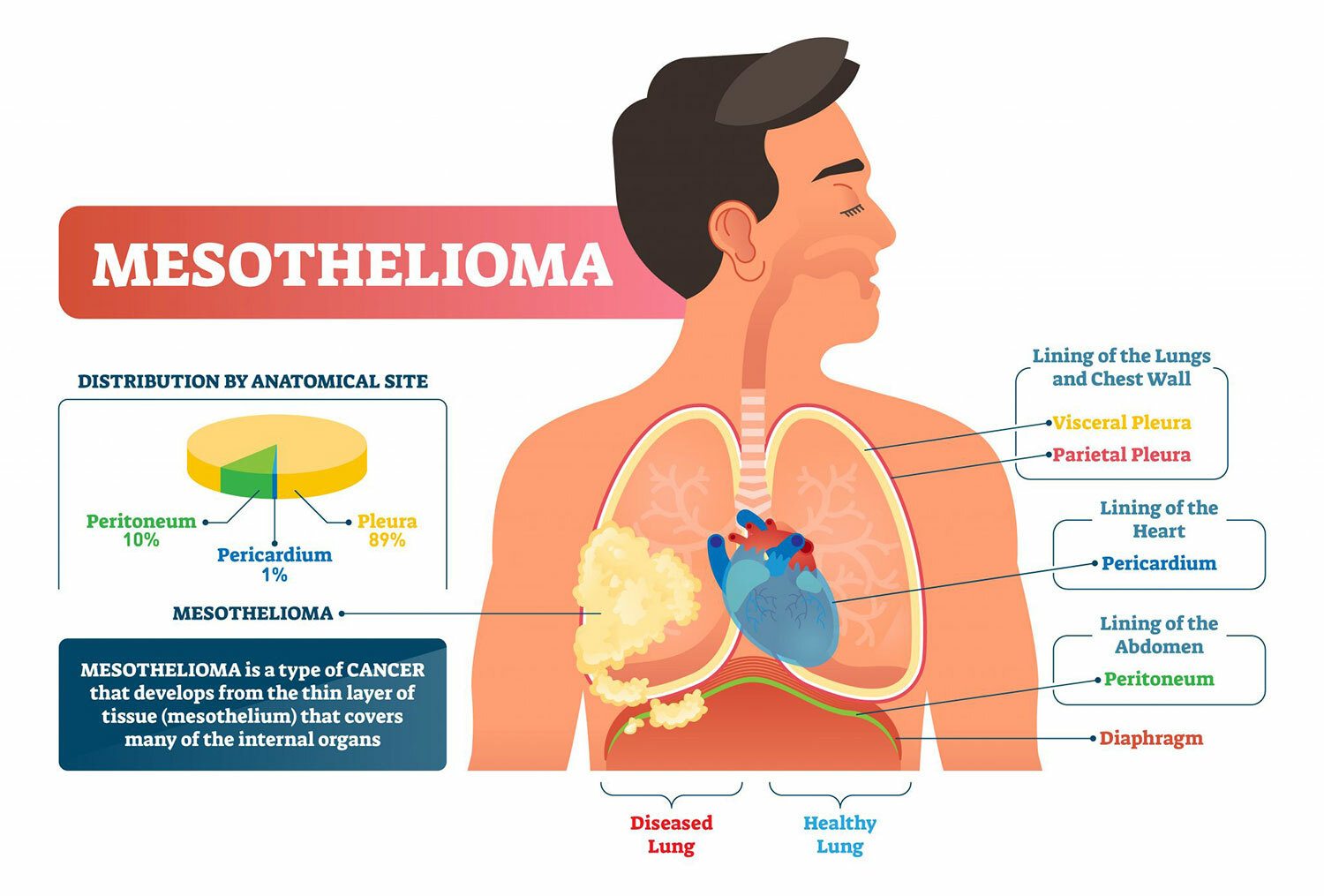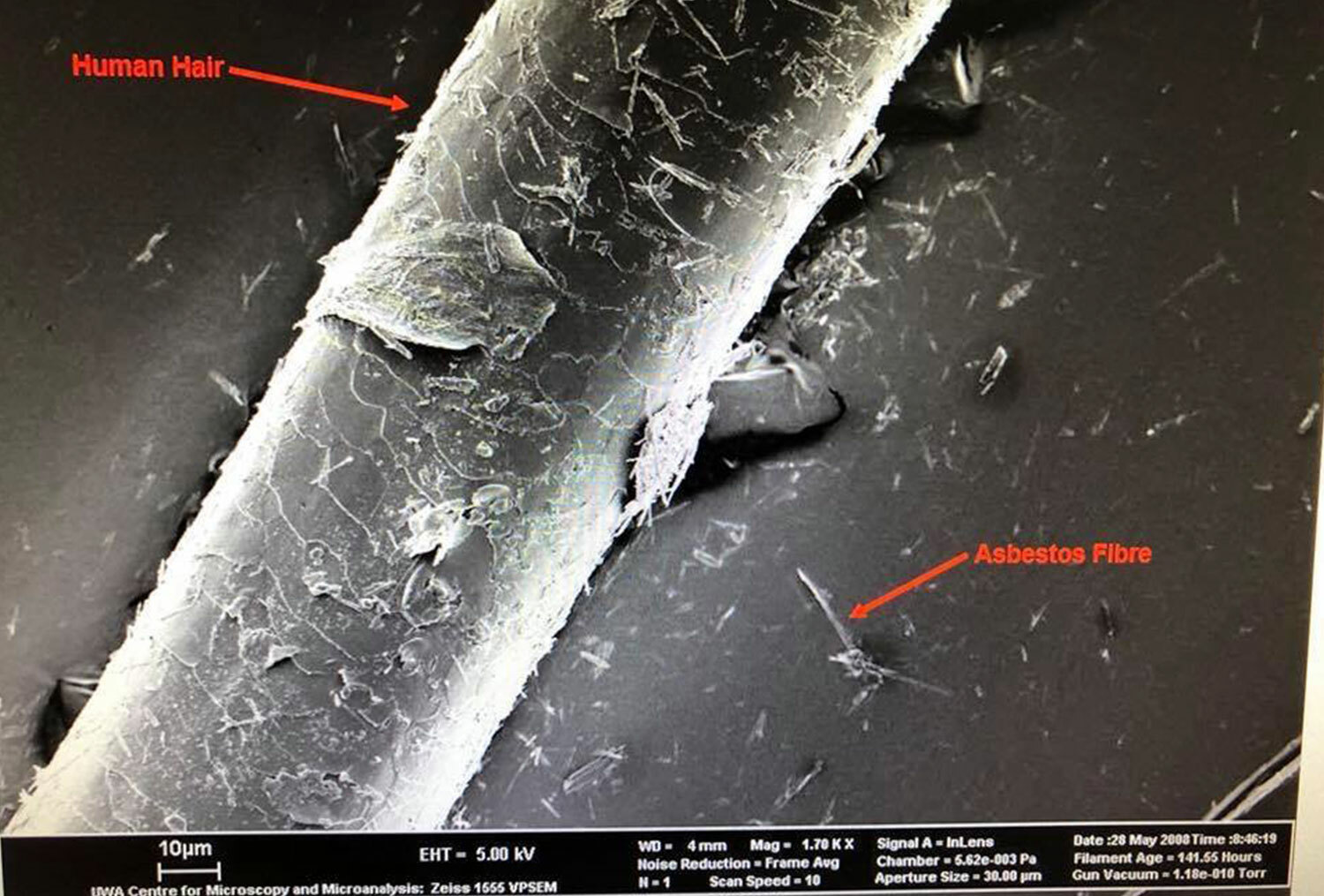The International Agency for Research on Cancer classifies asbestos as a known human carcinogen.
Asbestos is the primary cause of approximately half of all deaths from occupational cancer. Asbestos is a known carcinogen that has been linked to lung cancer and mesothelioma in exposed populations, with as many as 107,000 deaths per year worldwide. In addition, almost 400 deaths have been attributed to non-occupational exposure to asbestos.
In New Zealand, asbestos is the leading cause of work-related disease deaths. In 2010, approximately 170 people died of asbestos-related diseases, approximately 25 percent of all work-related diseases in New Zealand.
Breathing asbestos fibres may result in scarring of the lungs, which can cause shortness of breath and chest pains. Damaged asbestos containing materials in a poor condition or asbestos containing material in a poor condition can release fibres into the air. It is possible for certain fibres to remain in the air for up to 72 hours. Asbestos fibres are too small for the naked eye to see. Fibres can travel into the lungs and other areas of the respiratory tract when inhaled. Foreign fibres become lodged in areas of the lungs, which prevents the body's defence system from removing them. This can lead to fibrosis (lack of elasticity in the lung) or tumours in these areas, causing diseases with the potential to be fatal.


For most asbestos related diseases, it takes 20 to 40 years for symptoms to appear. Health risks increase when people inhale more fibres, are more frequently exposed to asbestos fibres and when exposure occurs over long periods of time. However, it is important to note that there is no safe type of asbestos and no safe threshold has been identified in terms of exposure to asbestos. All asbestos types are defined as carcinogenic to humans.
Non-fatal Diseases
Fatal Diseases
This is a fibrous thickening to the linings of the lungs (called pleura) or the diaphragm. The thickening can take around 20-30 years to develop after exposure to asbestos. The plaques calcift and harden over time. Although they usually do not cause any health problems, some people may experience discomfort when breathing.
This occurs when the lining of the lungs scars and scar tissue begins to form. As the scar tissue grows, the space between the lungs and the pleural decreases. This results in difficulty breathing and chest pain. The thickenting often shows after 15-20 years. In rare cases, symptoms can show after just 1 year.
Asbestosis is a form of pneumoconiosis, a disease characterized by scarring and inflammation of the lung tissue. Over time, this scarring increases and restricts the lungs ability to uptake oxygen. The symptoms include shortness of breath, persistent coughing, tightness around the chest, chest pain and clubbed fingers. Ultimately asbestosis causes respiratory failure and heart failure. The disease can take many years to develop and there is no known cure. Unlike other fatal diseases, there is a direct link between asbestosis and high levels of exposure to asbestos over many years.
Lung cancer is a malignant growth of abnormal cells in the lungs.Developing cancer can take many years and symptoms usually do not manifest until the disease has spread to other parts of the body.This means survival rates are low. The chances of developing asbestos-related lung cancer increase with exposure to asbestos and the amount of asbestos fibres inhaled. Scientific studies have been unable to define a level of exposure to asbestos which causes lung cancer. This disease also has a long latency period of anywhere between 10-40 years.
There is a synergistic effect of exposure to asbestos and smoking tobacco. A synergistic effect is two factors acting at the same time to produce an outcome which is much greater than one factor working alone. Exposure to asbestos and smoking tobacco increases the risk of lung cancer by around 53 times.
Mesothelioma is a form of cancer that can affect the lining of the lungs, the abdominal cavities, the abdominal organs, and the heart. It occurs when asbestos fibres become lodged in these areas and causes tumours. Like lung cancer, it has a long latency period of anywhere between 20-40 years. Early symptoms are often very mild and people are unaware they have any symptoms at all. It is almost always fatal with fatality occurring within 1 year of diagnosis. Unlike Asbestosis, there is no evidence of an exposure threshold before ill-effects occur. Mesothelioma has been found in people with relatively low exposure to asbestos.

The only way to know 100% if a material contains asbestos is to have a small sample tested at an accredited laboratory. This can be achieved through a basic sample collection of materials of concern or a thorough detailed survey of an area or building. Learn more about the range of services to suit your requirements.
Learn More
There are many different approaches to dealing with asbestos materials. Asbestos removal eliminates the problem altogether. However, in some cases, it may not be the safest or most practical solution to remove all asbestos materials. There is also the immediate cost to consider. Identified asbestos materials can be kept in situ and managed. Find out about the options available to you.
Learn More
The Hazard Management team have developed an online asbestos awareness course which aims to help homeowners, business owners and tradespeople better understand asbestos and the dangers it can pose.
Learn More